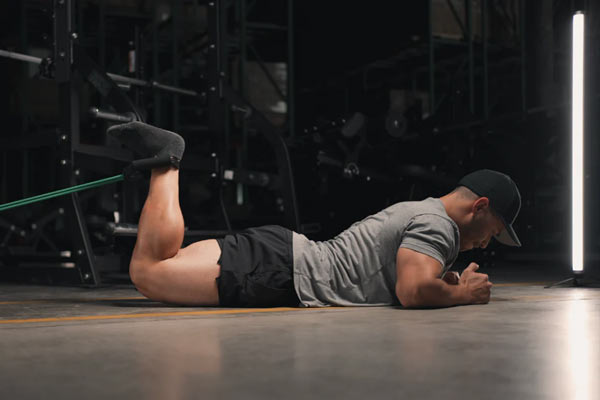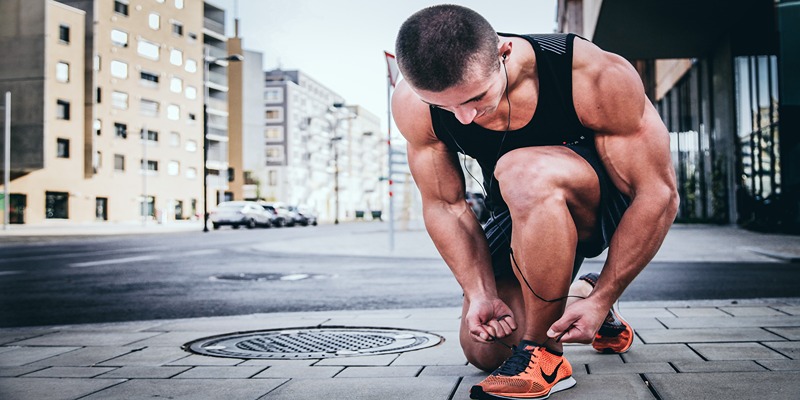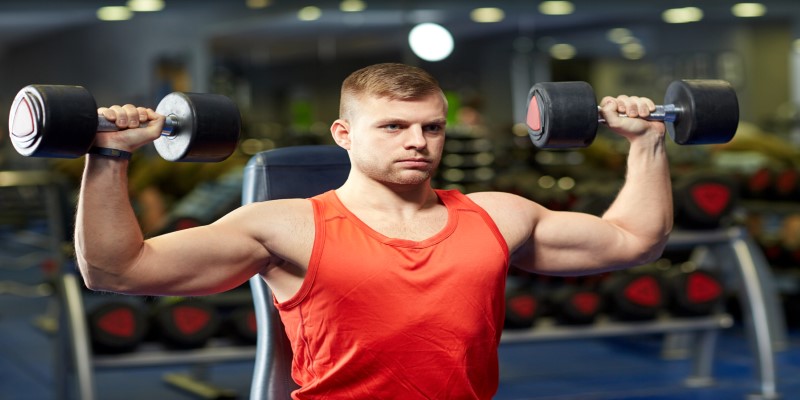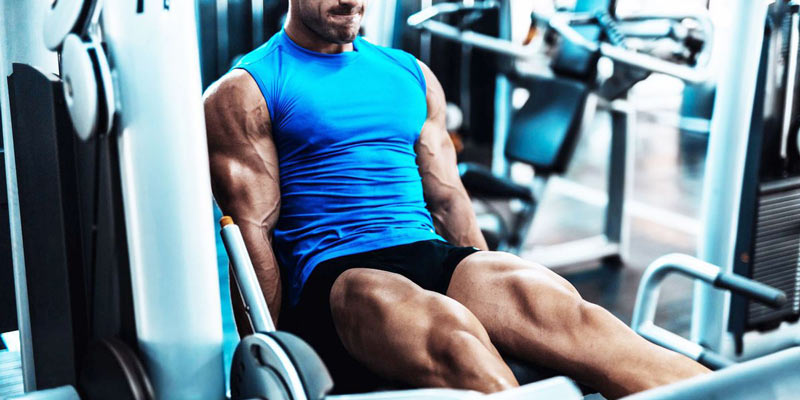Elevate Your Leg Day: Effective Hamstring Exercises You Might Be Missing
Dec 14, 2023 By Nancy Miller
There is more to building strong legs than just looks – it's necessary to maintain fitness and functional movements. The hamstrings, one of the most important groups of muscles located at the back side of the thigh, contribute greatly to the development of leg strength and stability. We are going to look at the role of hamstring strength in your strong and elastic legs and provide you with a lot of useful exercises.

Understanding the Hamstrings
One of the important groups of muscles that are located at the back of the leg is called the hamstrings, consisting of biceps femoris, semitendinosus, and semimembranosus. These muscles are of utmost importance for properly bending the knee and extending the hip. The complex coordination of the hamstrings is essential for several important activities in everyday life, including walking, running, and jumping. This becomes particularly evident in sports or other activities that require fast, strong leg movements. Development of hamstrings is vital since, without it, individuals might not achieve full stability and performance in athletics as well as ordinary work.
Insufficient hamstrings, for example, reduce athleticism and, at the same time, increase the probability of getting injuries. The hamstrings play a significant role in stabilizing the knee joint. Weakness in these muscles causes an imbalance that may lead to sprains, strains, or even ACL tears. It is impossible to overestimate the importance of hamstring strength because it is a major factor in decreasing athletic performance and raising the risk of injury. Therefore, it is important to have a clear knowledge of hamstrings and their role in the integrity of lower limb movements to improve the general health and performance of any person.
Importance of Strong Hamstrings
Injury Prevention
Healthy hamstrings can help avert injuries as well as support proper knee stabilization in this case of athletes. The hamstrings are powerful stabilizers that play a major role in knee joint stabilization. If these are not sufficient, then you are at risk of common injuries such as an ACL tear and muscle strains. Sudden stops and changes of direction can result in ligament tear and a torn ACL, which is a ligament within the knee. Hamstrings that are well-conditioned act as pillars of strength for the knee, thus helping in the absorption of shocks plus ensuring proper realignments during motions. Such a proactive stance towards the prevention of injuries is crucial, especially for those who take part in activities changing often directs like athletes so as not to get one of many disabling injuries that may lead to the abandonment of their physical activity.
Improved Posture
Hamstring development is very important for maintaining good posture since it supports all the muscles that surround the hip joints and pelvis. Hamstring muscles balance the activities of the quadriceps as well as those of the muscles of the lower back so that everything is kept in order around the hip area. Maintaining this balance of muscle activation throughout the day ensures proper alignment of a neutral spine, thereby eliminating postural imbalances, which may result in aches and long-term problems.
It is the musculature that remains strong and balanced in all of its parts; the hamstrings, first of all, will create the image of an upright and solid body, and the benefits going beyond just a nice look will extend to the spinal area, too. This, therefore, makes a case for investing in hamstring strength as a preventive step towards posture correction and overall good health of the musculoskeletal system.
Enhanced Athletic Performance
Athletes in various sports, from sprinting to weightlifting, benefit from strong hamstrings as they provide the necessary power and explosiveness for optimal performance.
Functional Movement
The strength of the hamstring depends a lot on how one walks, climbs the stairs, or lifts heavy weights in their daily activities. Therefore, the strengthening of this capacity improves general workability.
Effective hamstring exercises that can be incorporated into your workout routine
Romanian Deadlift (RDL)
The RDL is a basic exercise that addresses the hamstrings as well as the lower back. Squat with a hip-width stance, holding a barbell with a supine grip. Slightly hinge at the hips with back straight and barbell lowered towards the ground. Engage your hamstrings as you get back up.
Hamstring Curl
Hamstring curls should be done with a leg curl machine as well as a resistance band. Lie down, face down, on the machine or a bench with legs pulled up towards the glutes, contracting the hamstrings. Concentrate on a gradual and relaxed motion for optimum muscle involvement.

Glute Bridge
Hamstring curls should be done with a leg curl machine as well as a resistance band. Lie down, face down, on the machine or a bench with legs pulled up towards the glutes, contracting the hamstrings. Concentrate on a gradual and relaxed motion for optimum muscle involvement.
Nordic Hamstring Curl
Hamstring curls should be done with a leg curl machine as well as a resistance band. Lie down, face down, on the machine or a bench with legs pulled up towards the glutes, contracting the hamstrings. Concentrate on a gradual and relaxed motion for optimum muscle involvement.
Single-Leg Deadlift
Hamstring curls should be done with a leg curl machine as well as a resistance band. Lie down, face down, on the machine or a bench with legs pulled up towards the glutes, contracting the hamstrings. Concentrate on a gradual and relaxed motion for optimum muscle involvement.
Lying Leg Curl
This isolation exercise can be done using a leg curl machine. As you lie down on the equipment, place your feet beneath the cushioned bar and point them at your buttocks. Restrict, control, and concentrate on the hamstring contraction.
Swiss Ball Hamstring Curl
Put your legs on top of the stability ball as you lie on your back. Keeping your hips lifted upwards, bend your knee and lead the ball towards yourself. The challenge of maintaining a constant base of support causes intense work of the hamstrings, strengthening the core muscles as well.
Step-Ups
To work on hamstrings and quadriceps, use some step-ups as an exercise. Place one foot on a solid base while pushing down through the heel and activating your hamstrings to lift up off the ground. Work up for balance exercising with alternate legs.
Good Mornings
Put a barbell on your shoulders in a standing position; your feet should be slightly farther than shoulder-width apart. Hold it with hinged hips, straightened up back, and lower your pelvis to the surface of the floor. The strong focus on hip hinging utilizes the hamstrings and lower back.
Sprints
Dynamic involvement of hamstrings can be achieved through high-intensity sprints, during sprinting either on a track or on a treadmill.
Conclusion
Hamstring strength should be achieved by including a wide array of hamstring exercises in your workout program in order to attain balanced leg strength. Hamstrings do not only provide athleticism but also serve as protective factors for injuries during functional movement, such as walking and squatting. Make sure you properly warm-up before starting any intensifying your hamstring training. Regularly including these workouts will lay a solid foundation for healthy and strong legs that will help support achieving a well-rounded state of physical wellness.

Coffee's Health Advantages - A Global Beverage Phenomenon

Mastering Steady State Exercise at Home

5 Anti-inflammatory Recipes to Help You Fight Inflammation Naturally

Mastering Strength: A Guide to 5 Total-Body Dumbbell Challenges

Why You Shouldn't Dismiss Snail Slime for Flawless Skin

How to Get Rid of Eye Bags Naturally

Elevate Your Leg Day: Effective Hamstring Exercises You Might Be Missing


